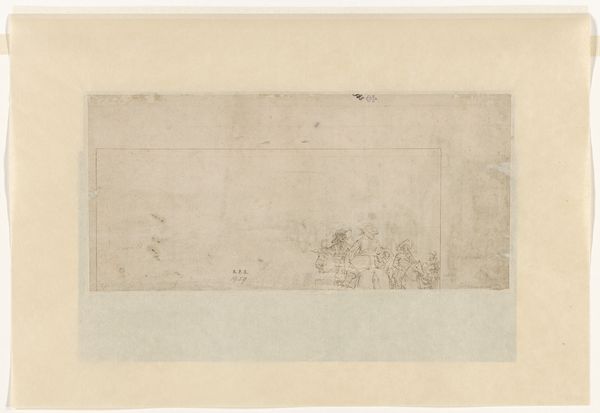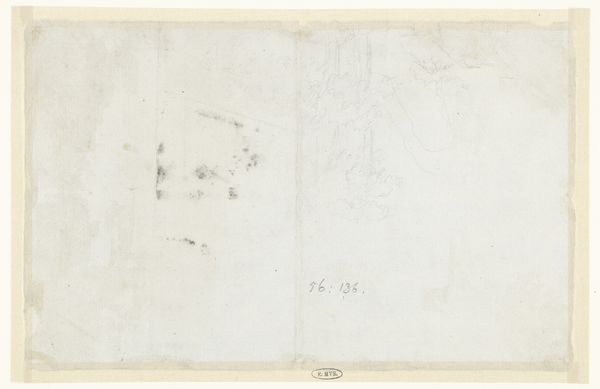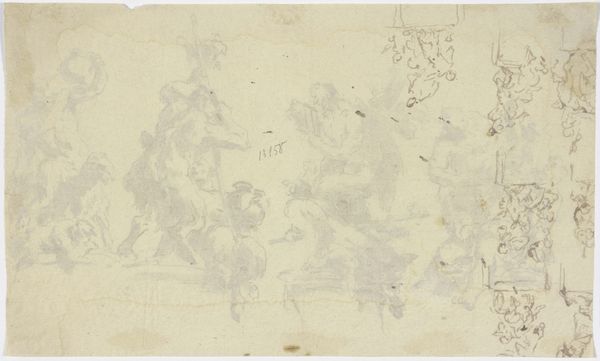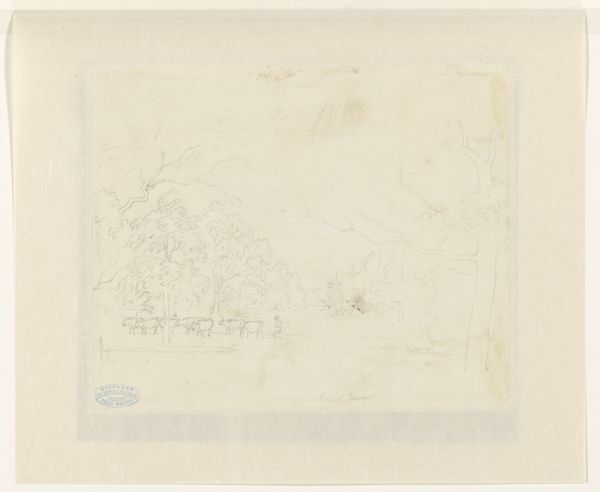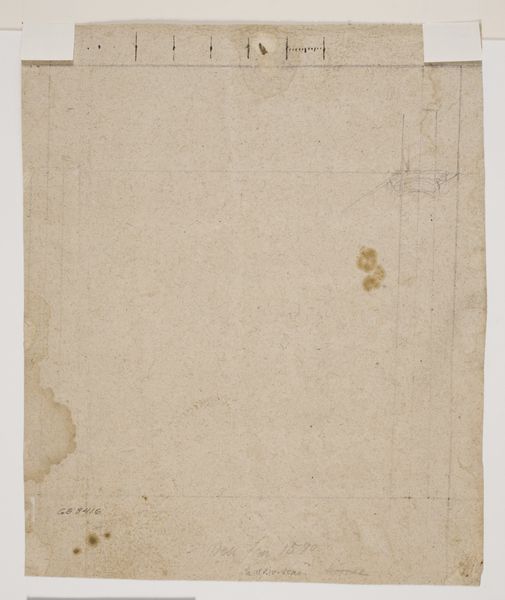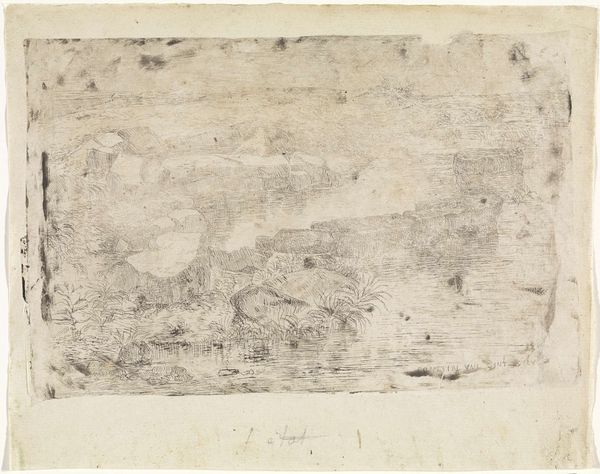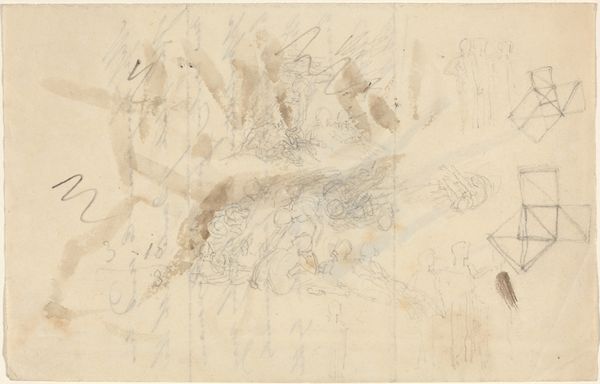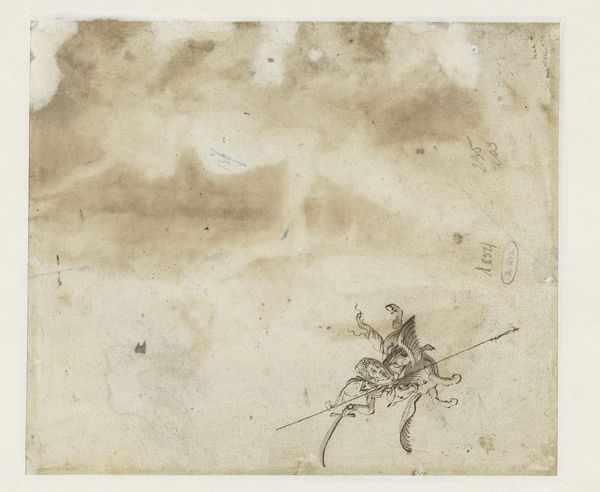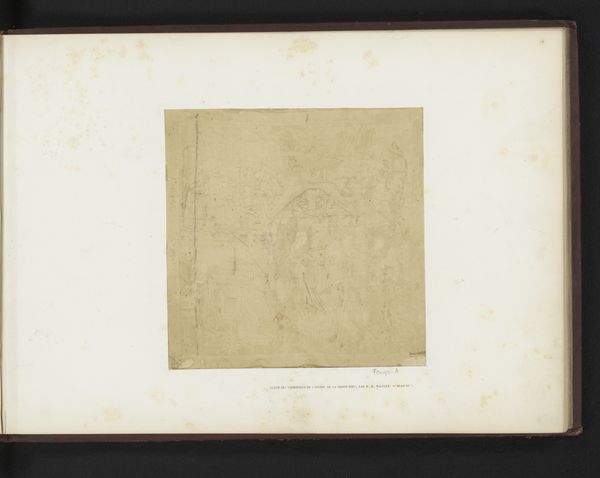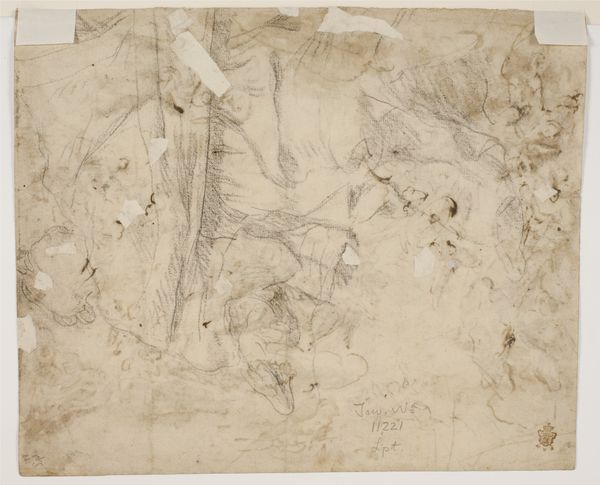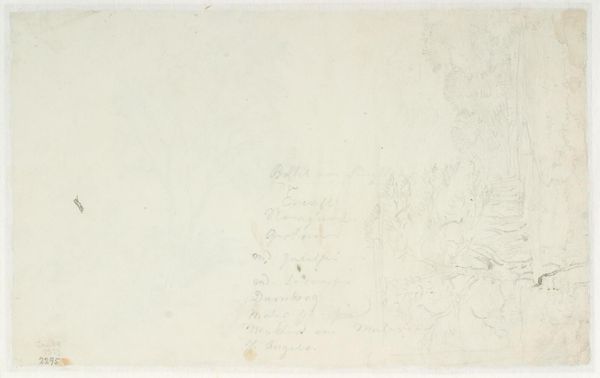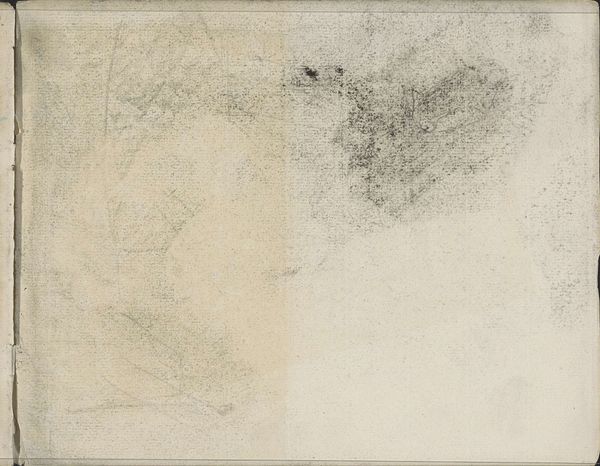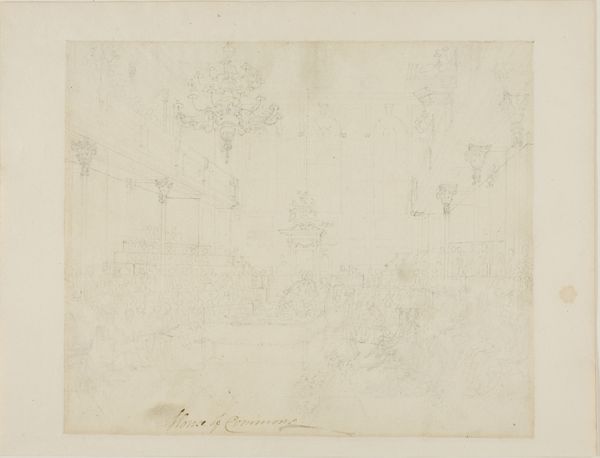
Sketches of a Cavalry Battle, Head, and Paws of a Greyhound 1813 - 1814
0:00
0:00
drawing, print, paper, graphite
#
drawing
# print
#
figuration
#
paper
#
romanticism
#
graphite
#
history-painting
Dimensions: 166 × 227 mm
Copyright: Public Domain
Curator: Standing before us is "Sketches of a Cavalry Battle, Head, and Paws of a Greyhound" by Théodore Géricault, created circa 1813-1814. It is currently held in the collection of the Art Institute of Chicago. Editor: My initial impression is one of frantic energy, the lines a whirlwind suggesting conflict and raw emotion. The greyhound studies at the bottom offer a serene counterpoint to the upper panels. Curator: Géricault, a leading figure of the Romantic movement, used sketches like this to explore themes of heroism and the brutality of war. Notice the material--graphite on paper allows for spontaneity but also lends itself to reproduction through printmaking, extending the work’s reach. Editor: The dynamism is undeniable. The clustering of figures and the layered strokes generate a real sense of movement, especially in the central battle scene. It's almost overwhelming in its visual intensity, like a snapshot of pure, chaotic force. How does Géricault manage to imbue so much vigor with such simple means? Curator: The composition's fragmentation mirrors the destabilization and loss associated with war. He's not glorifying battle but exploring its psychological and social impacts, including the economic structures supporting the military industrial complex. The contrast with the elegant, yet perhaps economically fueled greyhound is really pointed. Editor: I’m captivated by the tonal range. The darker graphite gives way to almost ethereal washes. It creates depth but also a sense of impermanence, as if these scenes are fleeting memories or premonitions caught on paper. It also contrasts very nicely to how Romantic painters use a very vivid color palette, which Géricault doesn't follow here. Curator: Absolutely. Géricault’s choice of graphite, a readily available material, reflects his grounding in contemporary concerns and resonates with a burgeoning print culture, facilitating broader consumption and discourse on military conflicts, and by extension the prevailing political system. Editor: It really highlights how materials can contribute to how audiences engage with the final artistic statement, I am inclined to think even back then that this had a powerful social impact! Curator: Precisely. A final thought, understanding the materiality invites consideration of not just *what* Géricault depicted, but *how* and for *whom* he created it. Editor: It seems we both walked away thinking a bit deeper about Romanticism today! Thank you.
Comments
No comments
Be the first to comment and join the conversation on the ultimate creative platform.
